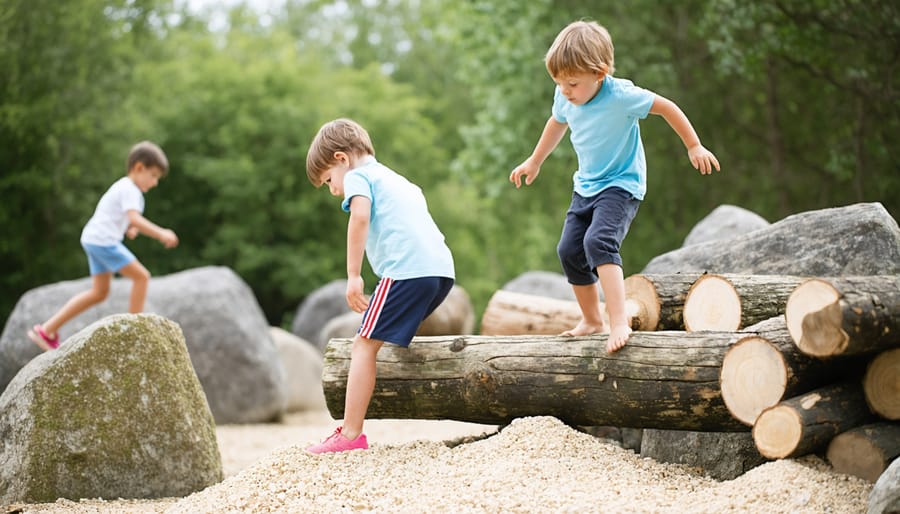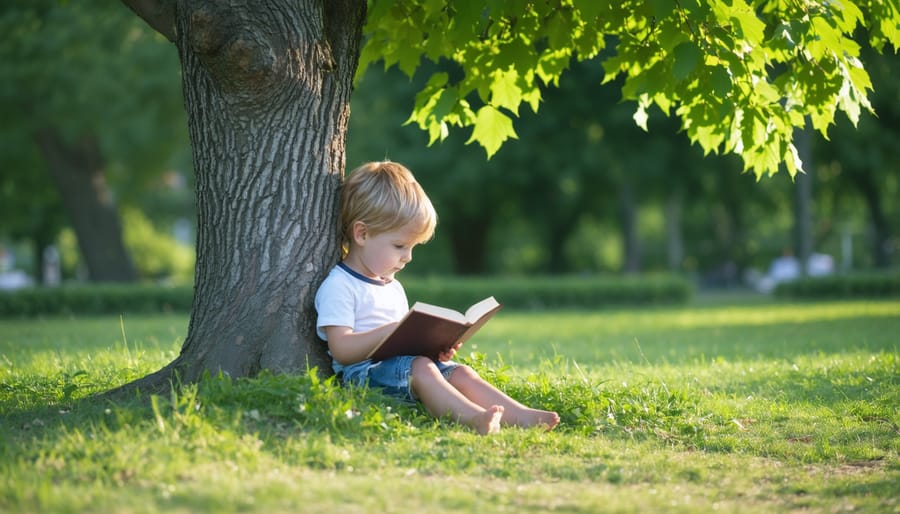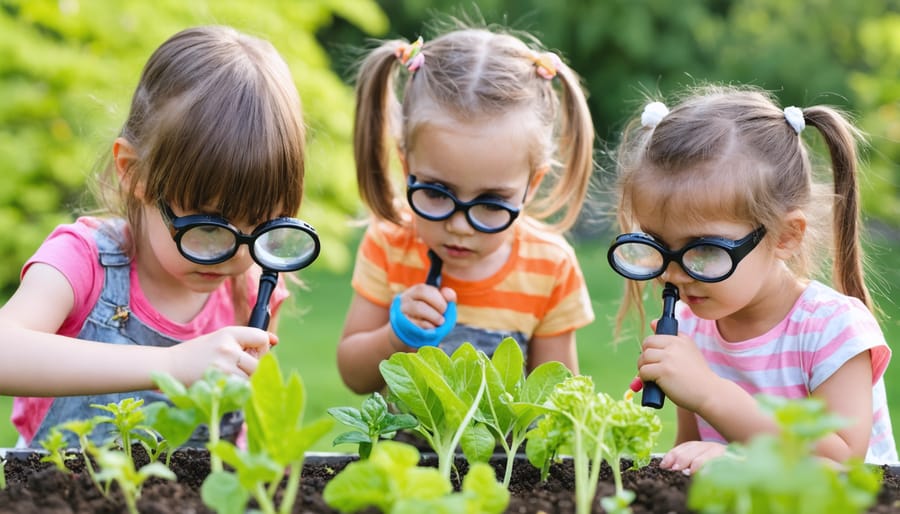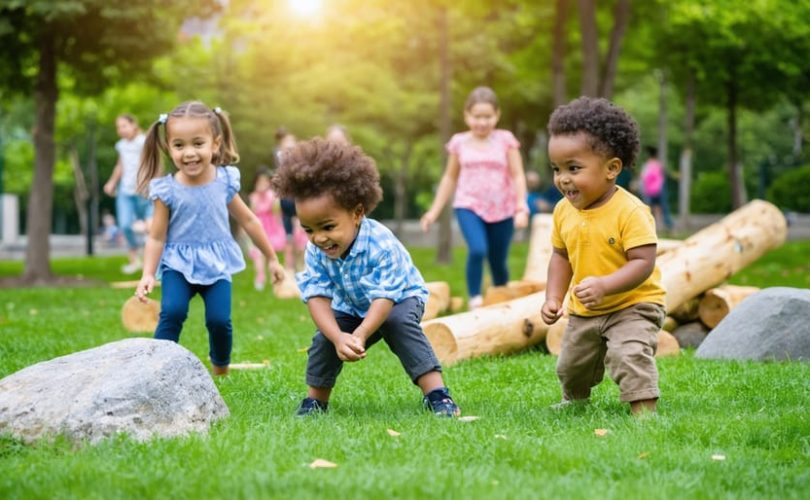Step into a bustling city park, and you’ll immediately notice the transformative power of green spaces in cities. Beyond their aesthetic appeal, these vital urban oases deliver profound benefits that ripple through our communities, improving physical health, mental wellbeing, and social connections in ways that modern science is only beginning to fully understand.
Recent studies by environmental health researchers reveal that children growing up near urban parks and gardens demonstrate stronger immune systems, better cognitive development, and lower stress levels compared to those with limited access to nature. These findings aren’t just statistics – they represent real opportunities for families and communities to thrive in otherwise concrete-dominated environments.
Consider this: just 20 minutes spent in a local park can reduce cortisol levels as effectively as meditation, while regular exposure to green spaces has been linked to a 15% reduction in childhood obesity rates. Urban gardens and parks serve as natural classrooms, fostering creativity, environmental awareness, and social skills that prove invaluable throughout life.
For parents, educators, and healthcare professionals seeking evidence-based solutions for child development, understanding these benefits isn’t just academic – it’s a practical pathway to nurturing healthier, happier, and more resilient young minds in our increasingly urbanized world.
Physical Development Benefits in Nature’s Playground
Movement and Motor Skills
Natural environments provide children with diverse opportunities for physical development that simply can’t be replicated in indoor settings. When children play in parks, gardens, and other green spaces, they engage in activities that naturally enhance their motor skills through climbing trees, balancing on logs, and navigating uneven terrain.
Dr. Sarah Chen, a pediatric physical therapist, explains, “Green spaces offer what we call ‘movement variability’ – different surfaces, heights, and textures that challenge children’s bodies in healthy ways. This natural complexity is crucial for developing strong motor skills.”
Children running through grass, picking up leaves, and playing with sticks develop both gross and fine motor skills simultaneously. The varied terrain helps improve balance and coordination, while activities like gardening strengthen hand muscles and finger dexterity. These natural environments also encourage spontaneous movement patterns that build core strength and spatial awareness.
Parents often notice their children are more physically active in green spaces compared to indoor playgrounds. A young mother, Maria, shares, “When we visit our local park, my daughter climbs, jumps, and explores for hours. She’s developing strength and confidence in ways that wouldn’t happen on standard playground equipment.”
The natural elements in green spaces also provide sensory-rich experiences that support motor development. Whether it’s walking barefoot on grass, climbing rough-textured trees, or playing in fallen leaves, these tactile experiences help children develop better body awareness and movement control.

Natural Exercise Opportunities
Green spaces naturally invite children and adults alike to engage in physical activity without the structured feeling of a gym or organized sports. Parks, gardens, and natural areas provide endless opportunities for spontaneous movement that feels more like play than exercise.
When children see an open field, their natural instinct is to run across it. A cluster of trees becomes an invitation for climbing and exploration. Even simple features like gentle slopes encourage rolling, running, and creative movement patterns that develop core strength and balance.
Dr. Sarah Thompson, a pediatric physical therapist, notes that natural environments offer varied terrain that helps develop different muscle groups and improve coordination. “Walking on uneven surfaces, climbing over logs, and navigating through natural obstacles provides much richer motor development than flat, artificial surfaces,” she explains.
Parents often report that their children stay active longer in green spaces compared to traditional playgrounds. This increased duration of physical activity happens naturally because the environment constantly presents new opportunities for exploration and movement.
For adults, green spaces offer low-pressure settings for walking, jogging, or practicing activities like yoga and tai chi. The presence of nature can make exercise feel less demanding and more enjoyable, encouraging consistent physical activity habits. Community gardens provide another form of natural exercise, combining gentle movement with purposeful activity.
These spaces also foster social interaction during physical activities, making exercise a more engaging and sustainable part of daily life.
Mental Health and Emotional Well-being
Stress Reduction and Emotional Regulation
In today’s fast-paced world, children face numerous stressors that can impact their emotional well-being. Green spaces offer a natural sanctuary where children can decompress and find emotional balance. Research shows that regular access to parks, gardens, and other natural areas plays a crucial role in managing childhood stress and developing healthy emotional regulation skills.
Dr. Sarah Chen, a child psychologist, shares her observations: “When children spend time in nature, their cortisol levels – the stress hormone – significantly decrease. I’ve seen remarkable improvements in children who regularly visit parks or have access to school gardens.”
The calming effect of green spaces works through multiple channels. The gentle rustling of leaves, birds chirping, and the natural rhythm of outdoor environments help activate children’s parasympathetic nervous system – their body’s natural relaxation response. This natural setting provides a perfect environment for children to process their emotions and develop coping strategies.
Parents often report that their children seem more centered and balanced after spending time outdoors. Eight-year-old Emma’s mother notes, “After a challenging day at school, our evening walks in the neighborhood park help Emma calm down and talk about her feelings more openly.”
Green spaces also offer safe places for emotional expression. Whether it’s running freely through an open field, quietly observing insects, or creating nature art, these activities allow children to express and process their emotions in healthy ways. The unstructured nature of outdoor play gives children the freedom to move at their own pace and find activities that match their emotional needs at any given moment.
Attention and Focus Enhancement
Recent studies have shown remarkable connections between access to green spaces and children’s ability to focus and concentrate. Parents and educators have long observed that children seem more settled and attentive after spending time in natural environments, and science is now backing up these observations with compelling evidence.
Research conducted at the University of Illinois found that children with ADHD experienced significantly reduced symptoms after spending just 20 minutes in a park setting. These improvements were comparable to those achieved through common ADHD medications, suggesting that “green time” could be a valuable complement to traditional treatments.
Dr. Sarah Martinez, a child psychologist specializing in attention disorders, shares: “When children interact with natural environments, their attention is engaged in a gentler, more sustainable way. Unlike digital screens that demand intense focus, nature allows for what we call ‘soft fascination,’ which helps restore attention capacity.”
This restoration effect isn’t limited to children with attention challenges. Studies show that students who can see green spaces from their classroom windows perform better on concentration tests and show improved academic performance. Even brief nature breaks between lessons have been found to help children reset their attention spans and return to tasks with renewed focus.
Parents like Maria Thompson have witnessed these benefits firsthand: “Since we started taking daily walks in our local park after school, my daughter finds it easier to complete her homework. She’s less fidgety and more focused.” This real-world experience reflects what researchers have documented – that regular exposure to green spaces can enhance attention spans and reduce mental fatigue in children of all ages.

Social Development in Natural Settings
Collaborative Play and Communication
Green spaces provide invaluable opportunities for children to engage in natural, spontaneous social interactions. The benefits of unstructured outdoor play extend far beyond physical exercise, creating rich environments where children learn essential communication and collaboration skills.
When children gather in parks and playgrounds, they naturally form groups, negotiate roles, and work together to create games and adventures. A child development expert, Dr. Sarah Martinez, notes, “In these natural settings, children practice crucial social skills like turn-taking, sharing, and conflict resolution without adult intervention.”
Consider the scenario of children building a fort using fallen branches: they must communicate their ideas, listen to others’ suggestions, and work as a team to achieve their goal. These interactions help develop empathy, leadership skills, and the ability to understand different perspectives.
Parks and community gardens also serve as meeting points where families from diverse backgrounds come together, allowing children to experience and appreciate different cultures and ways of thinking. A mother of three, Lisa Chen, shares, “I’ve watched my shy daughter blossom in our local park, making friends across language barriers through simple play.”
These green spaces become natural classrooms for social learning, where children develop confidence in their communication abilities and build lasting friendships through shared outdoor experiences.
Community Connection
Green spaces serve as natural gathering points where neighbors connect, children play together, and communities grow stronger. Parents often share how local parks and community gardens have helped them build lasting friendships with other families, creating valuable support networks that extend beyond the playground.
These shared outdoor spaces provide opportunities for both planned and spontaneous social interactions. Whether it’s children making new friends during after-school playdates, parents chatting while supervising playground activities, or neighbors working together in community gardens, these connections contribute to a stronger sense of belonging and community well-being.
Local parent Sarah Thompson shares, “Our neighborhood park has become more than just a place to play. It’s where we organize community events, celebrate birthdays, and where my children have made their best friends. The relationships we’ve built here have created a support system I never expected.”
Community green spaces also promote intergenerational connections. Senior citizens often find joy in watching children play, while garden projects bring together people of all ages to share knowledge and experiences. These interactions help reduce social isolation and create a more inclusive community environment.
Regular gatherings in green spaces strengthen neighborhood bonds and create a shared sense of ownership and pride in the community. This social cohesion extends beyond the parks themselves, leading to more engaged and connected neighborhoods where families feel supported and children thrive.
Cognitive Development and Learning
Nature-Based Learning
Green spaces serve as natural classrooms, offering children unique opportunities to develop problem-solving skills and unleash their creativity. When children engage in nature-based learning activities, they encounter real-world challenges that stimulate critical thinking in ways traditional indoor settings cannot match.
Watch as children navigate uneven terrain, build forts with fallen branches, or create art using natural materials – these seemingly simple activities are actually complex learning experiences. A fallen log becomes a balance beam, teaching spatial awareness and risk assessment. Collecting and sorting leaves develops pattern recognition and classification skills.
Dr. Sarah Martinez, a child development specialist, explains: “Natural environments provide open-ended learning opportunities that encourage children to think flexibly and develop innovative solutions. When a child figures out how to cross a stream or creates a nature-inspired story, they’re developing crucial cognitive skills.”
These green spaces also offer sensory-rich experiences that spark imagination. The changing shadows, rustling leaves, and varied textures create an immersive environment that enhances creative thinking and problem-solving abilities in ways that artificial environments simply cannot replicate.

Environmental Awareness
Green spaces in urban environments serve as living classrooms, fostering environmental awareness and stewardship in children from an early age. When children interact regularly with nature in their neighborhoods, they develop a deeper understanding of ecological systems and their role in protecting the environment.
Research shows that children who spend time in green spaces are more likely to develop pro-environmental attitudes and behaviors. Through hands-on experiences like watching butterflies pollinate flowers or observing seasonal changes in local parks, children naturally become curious about the natural world around them.
Many parents report that their children show increased interest in recycling, water conservation, and protecting local wildlife after regular exposure to green spaces. These early experiences often translate into lasting environmental consciousness and responsible decision-making as children grow older.
Community gardens and school green spaces provide particularly valuable opportunities for environmental education. Children learn about plant life cycles, local ecosystems, and sustainable practices through direct experience. This practical knowledge helps them understand complex environmental concepts in ways that textbooks alone cannot achieve.
By nurturing this connection with nature early on, we’re helping raise a generation that understands and values environmental preservation.
As we’ve explored throughout this article, green spaces in our cities offer invaluable benefits for children’s development and well-being. From enhanced physical activity and stronger immune systems to improved mental health and cognitive development, these natural havens are essential ingredients for raising healthy, happy children.
Remember, even small doses of nature can make a significant difference. Whether it’s a local park, a community garden, or a school playground with natural elements, these spaces provide children with opportunities to learn, grow, and thrive. Research consistently shows that children who regularly interact with nature demonstrate better concentration, reduced stress levels, and stronger social bonds with peers.
As parents and caregivers, we have the power to prioritize green space access in our children’s daily lives. Consider making regular visits to nearby parks part of your family routine. Engage with your local community to protect and expand existing green spaces. Advocate for more natural areas in schools and neighborhoods. Even creating small green spaces at home, like a windowsill garden or backyard nature corner, can provide meaningful connections to nature.
The investment in green spaces today shapes the health and happiness of future generations. By ensuring our children have regular access to these natural sanctuaries, we’re not just supporting their development – we’re nurturing their connection to the environment and fostering a lifelong appreciation for nature’s healing power.

